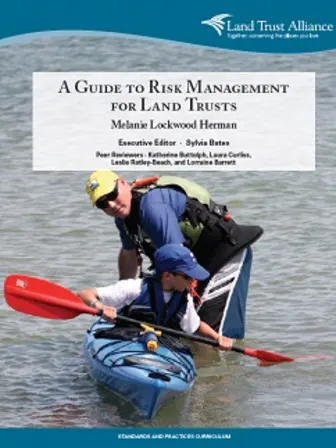A Guide to Risk Management for Land Trusts
Source
Author

About This Publication
This book provides an introduction to risk management in order to equip your land trust with information, resources and suggested strategies for designing and implementing a practical risk management program.
Chapter 1 is designed to introduce you to key concepts in the discipline of risk management so that you can prepare your land trust to develop a risk management plan that meets your organization’s unique needs. You will learn key concepts, such as risk, risk management and the legal duties of land trusts, as well as how to lay a good foundation for managing risk. This foundation includes consulting stakeholders, understanding the consequences of risk taking and creating a culture that is sensitive to the evolving nature of risk.
The myriad risks and tools for facing them are covered in chapter 2. Common risks addressed include those related to governance, IRS requirements and other laws and regulations, conflicts of interest, reputation, financial assets, recordkeeping, contracts, employees/volunteers/ contractors, fundraising, project acquisition, stewardship administration, property damage and personal injury. There are a number of tools available to help mitigate the downside of risk discussed in this chapter. They include recreational use statutes, liability shields, indemnification and charitable immunity statutes.
Chapter 3 brings us to the heart of the issue of risk, covering how to develop a risk management plan that meets the needs of your land trust. Creating a committee is the first step in crafting a plan, and the chapter provides useful tips on selecting and managing your team. The chapter then goes on to describe a practical process for managing risk and the different parts of a successful plan. The chapter concludes with strategies for implementing and updating the plan as necessary.
Insurance is a strategy for financing downside risks, and the book concludes with an overview of the common types of insurance that land trusts purchase and their purposes. Chapter 4 also provides tips on evaluating your land trust’s insurance needs and how to obtain needed coverage and save money at the same time.

